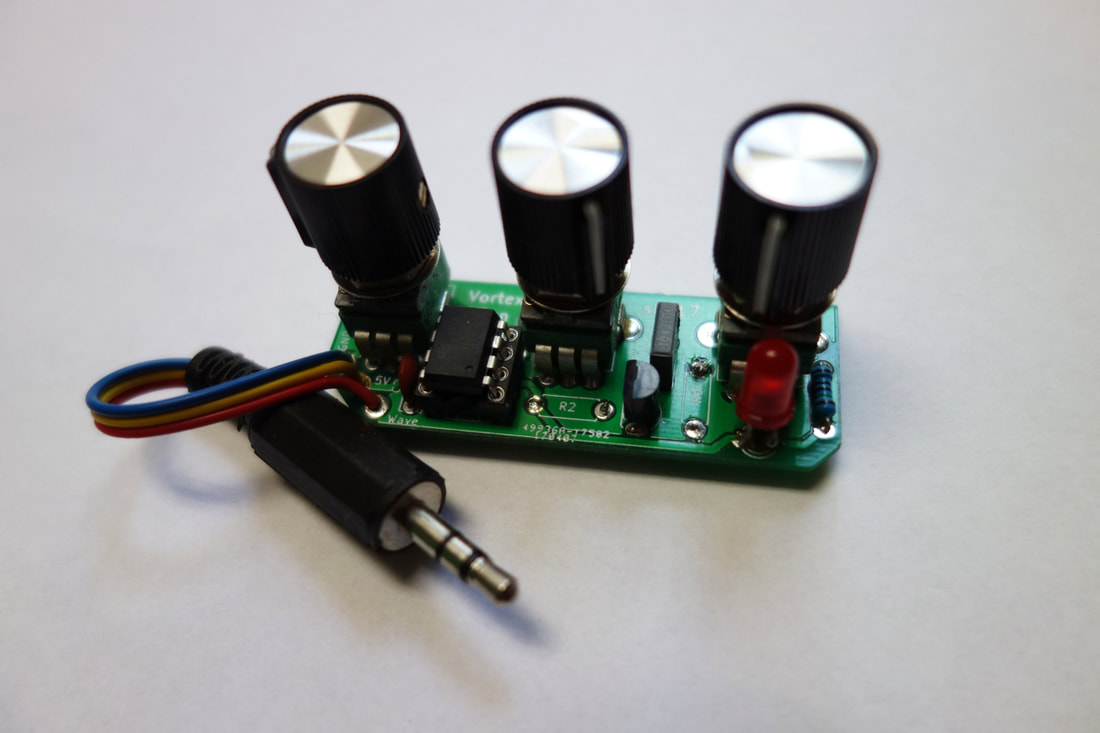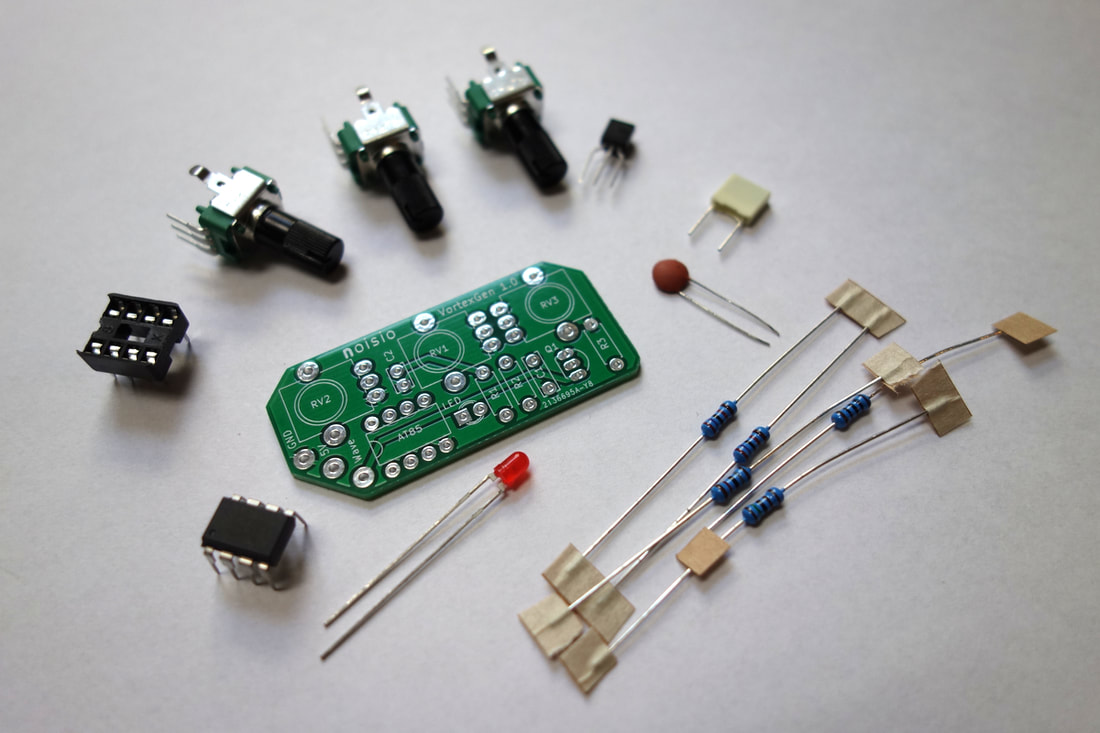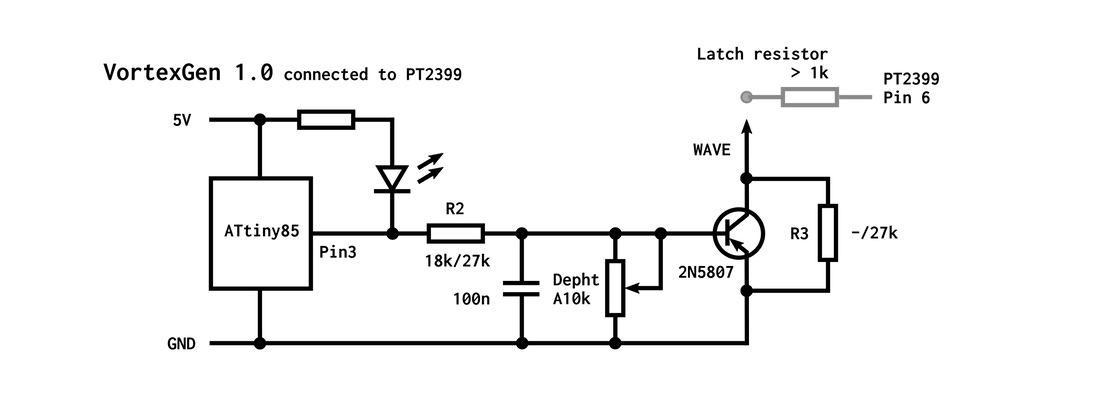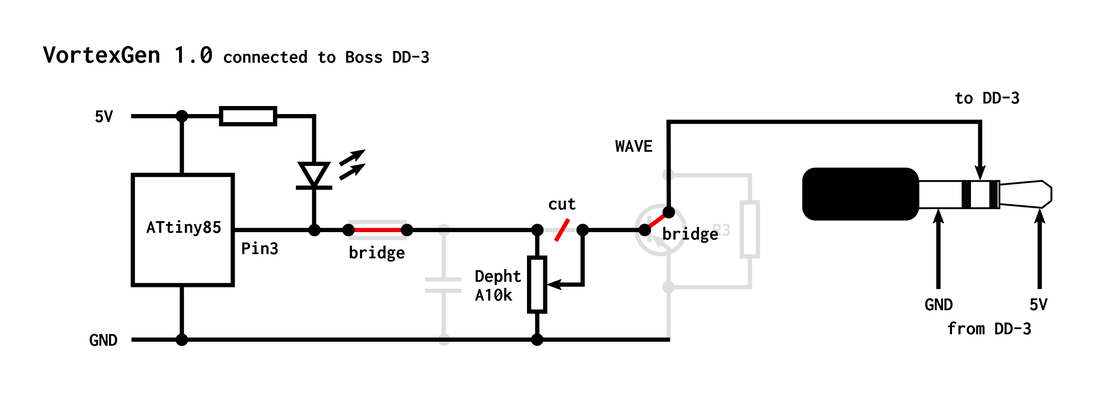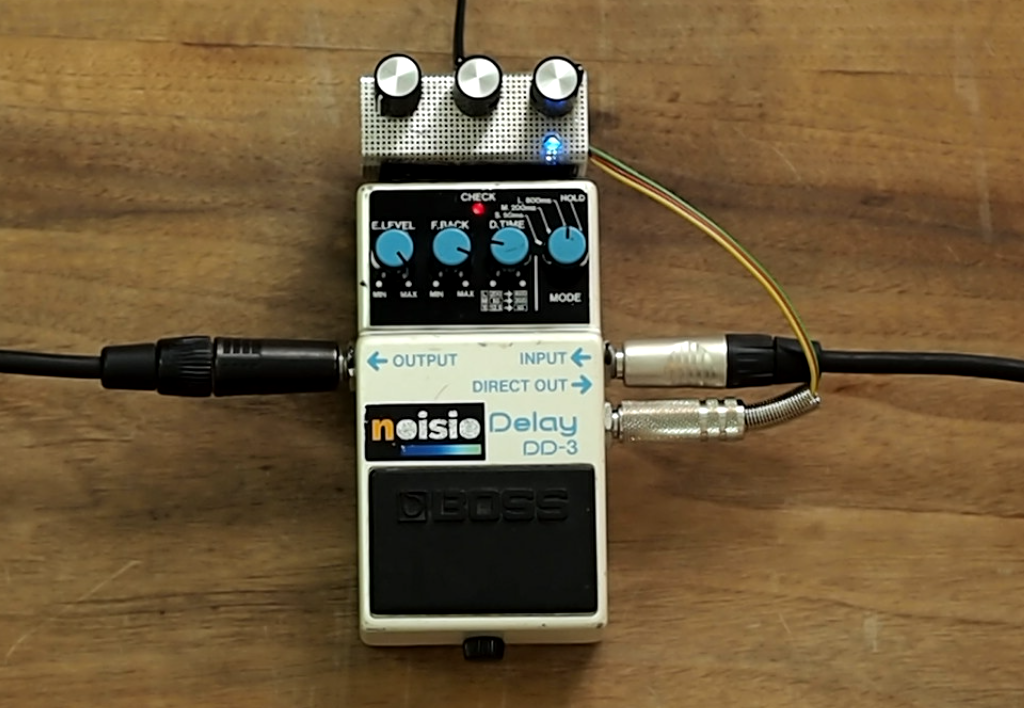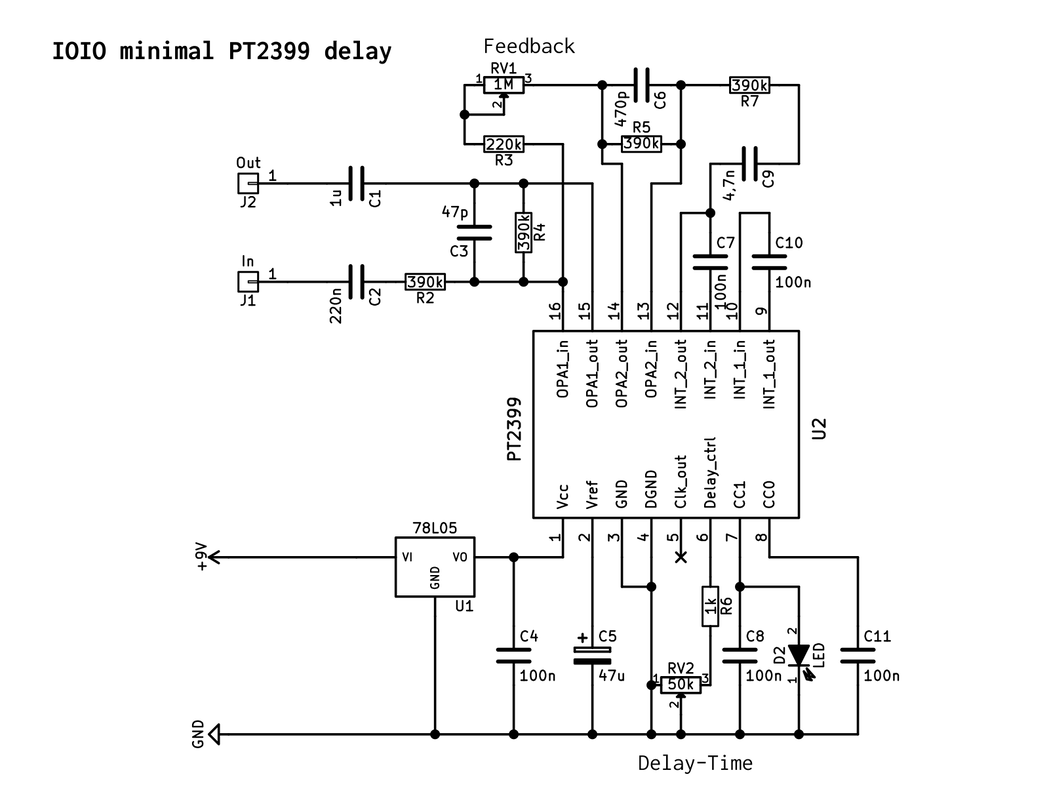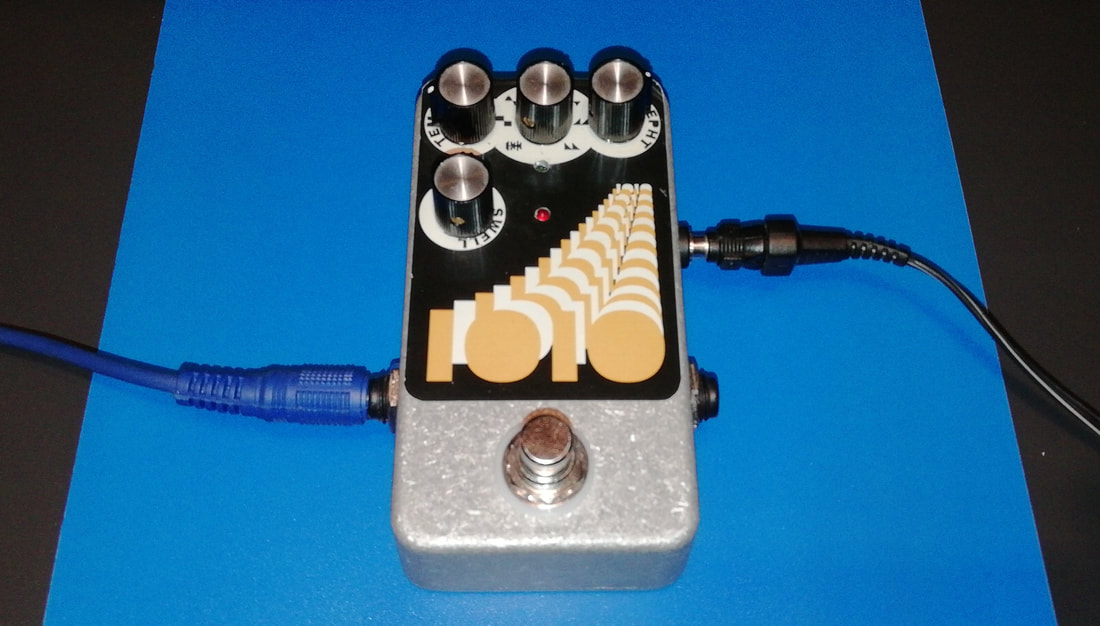
Already Soldered XIII - IOIO | Vortex Generator | ATtiny LFO
IOIO | Vortex Generator | ATtiny LFO
Designed by Steffen Koritsch - noisio
I have known Steffen Koritsch quite a while. He is a co-operator of the Circuit Control Festival in Dresden where I like to participate and perform every year. Last year Steffen was guest at my workshop Labor Sound at the Art University in Linz presenting the IOIO, the VortexGen, ATPC (ATiny Punk Console) and other stuff.
1* You are originally a guitarist and so it is obvious that you developed a delay with the beautiful name IOIO.
IOIO stands with its name for the input output loop of the echo. The idea of the kit was to create a guitar-optimized delay based on the PT2399, with as few components as possible. I could do that without any further transistors or IC's. For me, the vortex generator is the most exciting part of the complete kit. Thanks to the deep modulation possibilities, the signal can be brought into unexpected regions and spheres. Unfortunately, the PT2399 IC produces a lot of noise, which can be tolerated, or if not you have to cut the high frequencies so much that the signal gets dull. That's why I've finished the development of the delay. The Vortex Generator lives on and can take control of any PT2399 delay (and other FX).
2* But you've added a technical innovation to the IOIO, the Vortex Generator. Can you say something about the first idea?
The Vortex Generator is a little tool that can drive your FX wacky. It is designed to modulate delay effects, but can also be used as a general 5V LFO. The development of the kit is the origin of my enthusiasm for the ATtiny microcontroller line. After playing around with Arduinos for a few years, I came to the point where a full-grown ATMEGA chip was far too big for some small requirements.
The Vortex Generator
3* How does Vortex Generator work? What are the benefits? How does it work in detail?
For me it's always a big fun to change the rate of delay-effects while playing an
instrument. Rotating the control knob gives nice pitch-shifting sounds. While the tunes are shifted down by decreasing the tempo, higher notes can be obtained by turning up the potentiometer. One song where I was doing this intensively is F.Y. performed with the Breakup-Party (listen via Bandcamp player below). But how to play a guitar and turning knobs without having three hands? The solution in this setup was laying down the instrument to the ground, playing with a bottleneck and fiddle the knob in interim times. Another workaround I made was to outsource the potentiometer into an old volume pedal. But here is a way I found by just simply automating it.
The VortexGenerator is a minimal circuit in parts count and size. It doesn't even have its own power supply, as it gets it from the device it's connected to. And it is not just useful for delays. You can take it as a general 5V Low Frequency Oscillator (LFO) or automated adjustable resistor in various ways. With two of the potentiometers of the kit you're able to change the LFO rate and depth. The third one in center lets you choose between six waveforms (TRIANGLE, RAMP UP, RAMP DOWN, SINUS, SQUARE, RANDOM) or the original functionality.
You'll hear the first arrival of the effect around 2:30 coming full in place at 4:00 and grows on from there into the stormy finale.
4* The IOIO, your delay is built with the PT2399 IC. Is it possible to use the VortexJam with another self-built or commercial delay?
In its origin the circuit was designed to replace the tempo rate potentiometer of PT2399 delays miming a controllable resistor.
You can try different values for R2/R3 to come close to linearity. I had good results by taking 27k/27k or 18k and leaving R3 out.
The parameters of many digital fx are adjusted by vary potentiometers between 5 volts and ground. Due to that it's pretty simple to replace this with the VortexGenerator. You can take power and ground directly from the potentiometer solder joints and connect the output to the taper solder lug. With the Boss DD-3 I took the unused direct out jack for connection to the D.TIME potentiometer. The stereo plug brings 5V over the tip and ground to the PCB. By
plugging in the time pot becomes unconnected and replaced by the wave output of the LFO via the center pin.
Altering the kit for this requirement was quite simple. Since there is a following filter in the DD-3 circuit anyway, I could take the output of the microcontroller directly. Only two bridges were set, a small cut (already prepared on the PCB) had to be made and the transistor, R2, R3 and the capacitor was left out.
Schematics and photos by Steffen Koritsch
Thanks a lot Steffen!
Links:
noisio - https://noisio.de/
ATPC at Electronic Cottage - https://www.electroniccottage.org/wolfgang-dorninger/edition-3-attiny-punk-console
Circuit Control 2018 at Electronic Cottage: https://www.electroniccottage.org/wolfgang-dorninger/edition-4- circuit-control-2018
Also published on Electronic Cottage
Already Soldered Noisio IOIO ATiny LFO Electronic Cottage DIY 2019
Popular Post
- Album: DRKMBNT "RMX by Dorninger" - CDR/Digital
- Video / Live: Drkmbnt live at Home Made 2025
- Booking
- New live setup developed at Home Made 2025
- Listen / Radio: DeadBatteryMusic for SchrägeStunde
- Video: drkmbnt live at 24 Hours
- Listen / Radio: Airplay at No Pigeonholes EXP 5-1-25
- What did we do at dBm 2025
- Tiny Techno Orchestra at O-O-O.space
- Already Soldered XV - DroneSlider
- Soldered at the Circuit Control Festival 2024
- Video: Stepper Motor Synth - a jam!
- Workshop: Stepper Motor Synth
- My FX-Eurorack is finished!
- Already Soldered XIV - Moduletta
